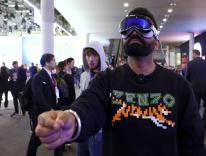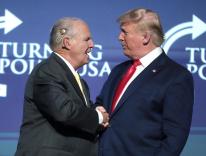One by one, the gridiron gods of my youth are proving terribly mortal. It is not just that a lot of ex-football players are dying. It is how they are dying. Their brains, to put it non-technically, have been turned to mush by the game they love. What’s taking these heroes out is not the silent artillery of time, but the loud cacophony of shoulder pads, helmets and human bodies.
Every week, it seems, the ranks of pro football players lost to chronic traumatic encephalopathy acquires a new victim. This Super Bowl week it was Ken “The Snake” Stabler, the former Raiders QB, who died last summer and whose family offered up his brain for study. And many of those still living are sunk in hopeless dementia -- like Willie Wood, the superlative defensive back for the Packers of the Lombardi glory years, who can no longer recall the stellar interception he made in the first Super Bowl fifty years ago. Or anything else, for that matter.
The basics of brain injury and the NFL have been so broadly aired by now, in books and articles and in the current Hollywood film, Concussion, there’s no need for me to rehash them. Only to point out that the roll call of the dead and damaged just keeps growing.
Prodded by lawsuits and the belated perception of CTE’s existential threat to the game, the NFL has responded with off-the-field compensations and on-the-field rule changes. These rule changes are not insignificant. No helmet-to-helmet contact. No violent hit against a player in a defenseless position. Interestingly, some of the new rules remain hazy, but what’s clear is that especially violent hits simply will not be allowed: if it looks too ugly, it’s going to draw a flag, and the refs will figure out the penalty afterward.
That’s a good thing, and such changes at the very least constitute a recognition by the league of the problem. But can they ever solve that problem? Football is a game, as they say, of momentum. That is true figuratively, but more important it is true scientifically. Mass times velocity: as the years go by, the players keep getting both bigger and faster. Momentum grows apace, and with it the force of the impacts that form the game’s fundamental action. You can change tackling rules, but not Newton’s laws; the physics of football are inalterable. The incidence of concussions is up, despite the new rules.
So where does that leave us, leave me? Is the fan who has acquired deep qualms about the game, in light of what we increasingly know about the devastation caused by CTE, morally obligated not to watch? In a much-quoted 2013 interview in The New Republic, Barack Obama confessed that although he is “a big football fan, I have to tell you if I had a son, I'd have to think long and hard before I let him play.” The President went on to express the hope that the kind of rule changes now in effect can reduce some of the violence of football – not only to make it safer for the players, but also, he said, so that “those of us who are fans maybe won’t have to examine our consciences quite as much.”
Morally it was an interesting, and somewhat hedged, reflection. A year later, in a New Yorker profile, Obama reiterated that “I would not let my son play pro football.” But, he added, “at this point, there’s a little bit of caveat emptor... These guys, they know what they’re doing. They know what they’re buying into. It is no longer a secret. It’s sort of the feeling I have about smokers, you know?”
Is the notion that professional football players – at least from now onward – are undertaking the sport freely, in full recognition of the risks involved, sufficient to indemnify fans against complicity? Plenty of people say no. An acquaintance of mine, Steve Almond, has written a book, Against Football: A Reluctant Manifesto, laying out his decision to stop watching the NFL. A Times roundtable last week discussed the same topic, pro and con, with respectable arguments on either side. (A feature in today’s New York Times Magazine, titled “Roger Goodell’s Unstoppable Football Machine,” reports that “these are days of both great confidence and unease in professional football,” and notes that while the league may be “under siege,” it is prospering as never before, with 2015 revenues topping $12.5 billion.)
Like President Obama, I’m a big football fan. My own love of football traces to a childhood spent enthusiastically playing and watching it, a habit of football fandom with which my relationship with my father was (and still is) intertwined. I will be watching Super Bowl 50 today. But not without ambivalence. To be honest, my ambivalence -- at this point, anyway -- is still more in my head than my gut: a qualm, a reservation. But for how long? I used to watch a fair amount of boxing, and then I stopped. I don’t watch any more because, in effect, my judgment of the sport caught up with, and changed, my affections, altering my experience of watching it and making what once felt thrilling now feel awful.
That’s hardly a principled argument, I’m aware; just a description of the felt reality of a fan’s dilemma. That felt reality can change with time. Roger Goodell and the NFL owners are making players tackle differently because the league understands that fans can, do and eventually will learn to react differently to what they see on the field. If increasingly the prospect of a violent hit carries with it the image of a bewildered and befuddled 60-year-old, unable to recognize his wife or children, the average fan may no longer jump up and cheer, but instead wince and turn away. That is the point at which the nightmare of the ex-players, and of the league, will become one and the same.
Please email comments to [email protected] and join the conversation on our Facebook page.


